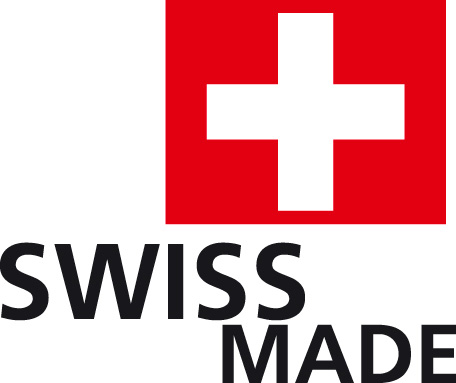Toucheau en acier avec une lamelle en or 375 pour tester l'or rose
Référence : 6675-375-R
Pour or jaune 9 - 14 - 18 - 22 carats.
Pour or rouge 9 - 14 - 18 - 22 carats.
Pour or gris au palladium 18 carats.
Longueur totale: 70 mm.
Sur socle bois.
Dimensions: 90 x 80 x 50 mm. Mode d'emploi De l'assortiment de réactifs No 30502 et des toucheaux No 30504, plus No 6675.
Cet essai a pour but d'évaluer le titre des matières d'or, d'argent et de platine.
Ce procédé a l'avantage de ne pas détériorer les pièces que l'on veut essayer. Pour ces essais d'alliage, on se sert de la pierre de touche inclue, sur laquelle on frotte l'alliage en différents endroits, en veillant de ne pas se servir des premières traces ou touches. En effet, si l'objet a été fortement déroché ou mis en couleur, sa surface peut se trouver à un titre plus élevé et l'approximation du titre serait inexacte. De plus, il faut avoir à disposition des fragments d'or étalon, dont on con-naît les valeurs d'alliage, ou mieux le toucheau BERGEON
No 30504
ou l'assortiment de 9 toucheaux
No 6675.
Ces pièces étalons doivent aussi être frottées sur la pierre de touche. La trace définitive étant faite, on la compare aux traces obtenues par des toucheaux ou fragments d'or, dont on connaît le titre. On passe ensuite sur les
différentes traces, la tige du bouchon enduite de réactif Bergeon à étiquette bleue 18 ct. et l'on observe l'effet produit. Si la trace de l'objet à essayer disparaît, ou devient claire, le titre est inférieur à 18 ct. De ce fait on essaye le réactif
Bergeon à étiquette rouge 14 ct. et ainsi de suite jusqu'à parité d'action de la trace de l'objet à essayer avec le toucheau ou fragment d'or à titre connu. La trace d'or pur 1000/1000 n'est pas attaquée, elle persiste sur la pierre de touche en contact avec le réactif Bergeon, flacon étiquette bleue 18 ct. Il en est de même avec le platine. Avec le flacon réactif Bergeon, étiquette verte 7-10 ct., la trace sur la pierre de touche disparaît, si l'objet ne contient aucune particule d'or.
Pour l'or gris, la comparaison se fait de la même façon qu'avec l'or jaune ou rouge. Pour constater l'argent sur la pierre de touche, on se sert du flacon réactif Bergeon, étiquette bleue 18 ct., qui forme avec les traces sur la pierre de touche un précipité blanc indiquant un titre de 925 ou 800/1000 d'argent. La détermination du titre d'argent de l'objet est indispensable par la teinte plus ou moins grise de l'alliage. Le zinc et le nickel ne laissent pas de trace sur la pierre de touche, ainsi que le cuivre.
Après les essais, il est recommandé de rincer la pierre de touche à l'eau pour faire disparaître les traces restantes, finir avec de la pierre ponce très fine, puis sécher.
En saison froide, lors d'essais, on réchauffe la pierre de touche dans sa main pour éviter des réactions trop lentes.
Pour or rouge 9 - 14 - 18 - 22 carats.
Pour or gris au palladium 18 carats.
Longueur totale: 70 mm.
Sur socle bois.
Dimensions: 90 x 80 x 50 mm. Mode d'emploi De l'assortiment de réactifs No 30502 et des toucheaux No 30504, plus No 6675.
Cet essai a pour but d'évaluer le titre des matières d'or, d'argent et de platine.
Ce procédé a l'avantage de ne pas détériorer les pièces que l'on veut essayer. Pour ces essais d'alliage, on se sert de la pierre de touche inclue, sur laquelle on frotte l'alliage en différents endroits, en veillant de ne pas se servir des premières traces ou touches. En effet, si l'objet a été fortement déroché ou mis en couleur, sa surface peut se trouver à un titre plus élevé et l'approximation du titre serait inexacte. De plus, il faut avoir à disposition des fragments d'or étalon, dont on con-naît les valeurs d'alliage, ou mieux le toucheau BERGEON
No 30504
ou l'assortiment de 9 toucheaux
No 6675.
Ces pièces étalons doivent aussi être frottées sur la pierre de touche. La trace définitive étant faite, on la compare aux traces obtenues par des toucheaux ou fragments d'or, dont on connaît le titre. On passe ensuite sur les
différentes traces, la tige du bouchon enduite de réactif Bergeon à étiquette bleue 18 ct. et l'on observe l'effet produit. Si la trace de l'objet à essayer disparaît, ou devient claire, le titre est inférieur à 18 ct. De ce fait on essaye le réactif
Bergeon à étiquette rouge 14 ct. et ainsi de suite jusqu'à parité d'action de la trace de l'objet à essayer avec le toucheau ou fragment d'or à titre connu. La trace d'or pur 1000/1000 n'est pas attaquée, elle persiste sur la pierre de touche en contact avec le réactif Bergeon, flacon étiquette bleue 18 ct. Il en est de même avec le platine. Avec le flacon réactif Bergeon, étiquette verte 7-10 ct., la trace sur la pierre de touche disparaît, si l'objet ne contient aucune particule d'or.
Pour l'or gris, la comparaison se fait de la même façon qu'avec l'or jaune ou rouge. Pour constater l'argent sur la pierre de touche, on se sert du flacon réactif Bergeon, étiquette bleue 18 ct., qui forme avec les traces sur la pierre de touche un précipité blanc indiquant un titre de 925 ou 800/1000 d'argent. La détermination du titre d'argent de l'objet est indispensable par la teinte plus ou moins grise de l'alliage. Le zinc et le nickel ne laissent pas de trace sur la pierre de touche, ainsi que le cuivre.
Après les essais, il est recommandé de rincer la pierre de touche à l'eau pour faire disparaître les traces restantes, finir avec de la pierre ponce très fine, puis sécher.
En saison froide, lors d'essais, on réchauffe la pierre de touche dans sa main pour éviter des réactions trop lentes.
video title
video content




